IMAGO’s Michael Hughes photographed Berlin’s iconic Christopher Street Day, the original Pride march, the summer after the fall of the Berlin Wall. IMAGO spoke to him about his career and the city’s ever-shifting cultural landscape.
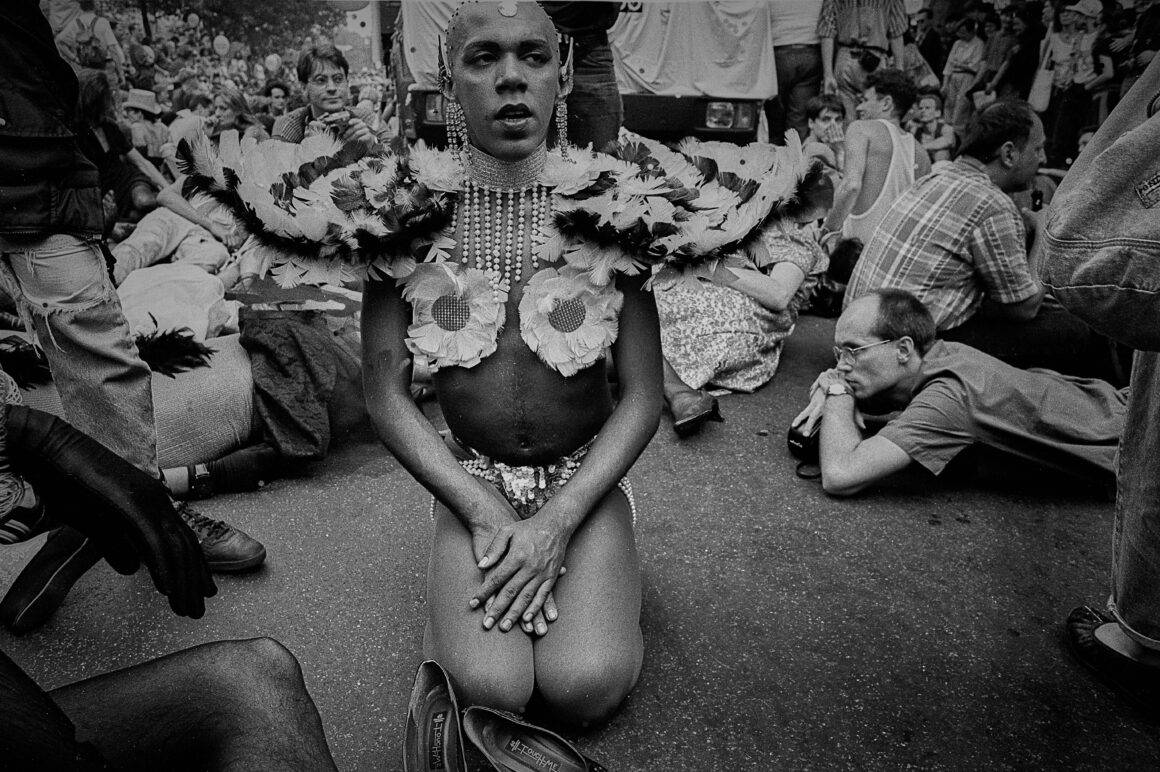
Christopher Street Day and the Berlin Wall – An Interview with Micheal Hughes
“I photographed intensely and danced along. The weather was splendid and the people were exuberant. I walked backwards as the masses marched forward – it was very harmonious,” said photographer Michael Hughes in an interview with IMAGO. Especially as the Berlin Wall saw its demise, Christopher Street Day has signified liberation and planted its roots in Berlin as it continues to be a pillar in the city’s culture.
Christopher Street Day, the original Pride march which started in New York City in memory of the 1969 Stonewall Riots, is a staple of Berlin. The first Christopher Street Day in Europe was held in Berlin in 1979 under the name Freedom Day, and the city remains to be Europe’s epicenter for such events. The Lesbian and Gay City Festival (the largest in Europe since 1993), Berlin Pride, Folsom Europe, Easter in Berlin, and Kreuzberg Pride (aka Transgenialer, an alternative to Pride), along with a number of smaller events and regular queer parties held in Berlin’s bars and nightclubs, are woven into the fabrics of Berlin’s identity.
Hughes, a self taught photographer, has worked for newspapers such as Der Spiegel, Stern, Tageszeitung (TAZ, Daily Newspaper), The Guardian and The Sunday Times, and has put on photo exhibitions in cities like Berlin, Glasgow, Potsdam, The Hague, Sao Paulo and Milan. He is also known for his worldwide souvenir travel series published in GEO Saison and National Geographic.
His archives from the 1990 Christopher Street Day, the summer after the fall of Berlin Wall as the city underwent a massive shift, bear witness to Berlin’s resilient queer-community who blended activism with celebration.
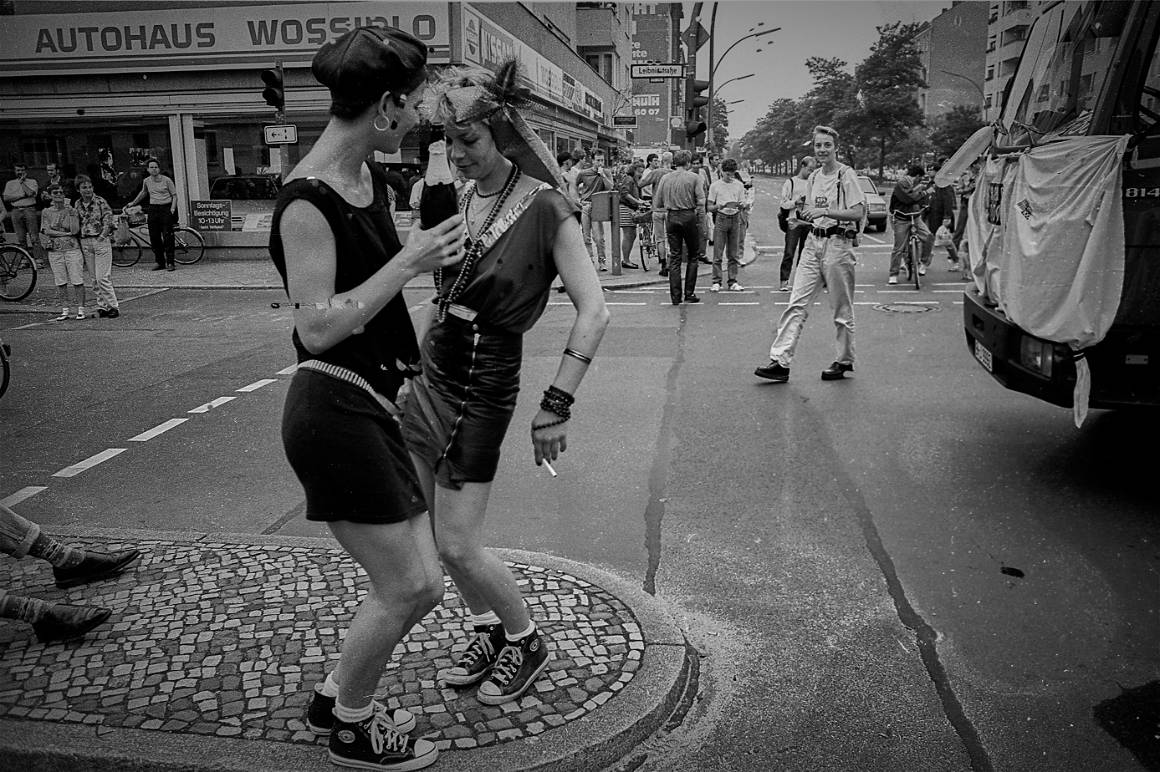
Firstly, tell us a bit about yourself. How long have you been a photographer in Berlin, and what brought you to photograph Christopher Street Day?
I came to Berlin in 1982 to protest against Ronald Reagan. I was squatting in London and heard about Christopher Street Day from a neighbor who was from Amsterdam. I started to photograph in London as an autodidact, taking concert photos for NME (New Musical Express) – bands like Siouxsie and the Banshees, The Cure and Wire. I had worked for Screen, The Royal Court Theatre and City Limits, along with doing photo reportages and designing for Camerawork (Art Council of Great Britain).
1990 was a unique time for Berlin and as a photographer, you have to closely observe your surroundings. Can you paint us a picture of what your experience in Berlin was during this transition period?
In Kreuzberg, the Wall was permanently in front of your eyes. You staggered from pub to pub along the wall, knowing that unfriendly people with Kalashnikovs were on the other side. Berlin was empty at the time. A sort of desert formed along the wall, just tumbleweeds and tourists. Older people and perma-students populated the city, where the students driving taxis would bring the elderly to medical appointments. I was reporting for Stern on the evening of November 9, 1989 and was photographing the accommodations for refugees from East Germany in Messe Berlin as the news came [of the Wall]. It was clear that it was the end of an era.
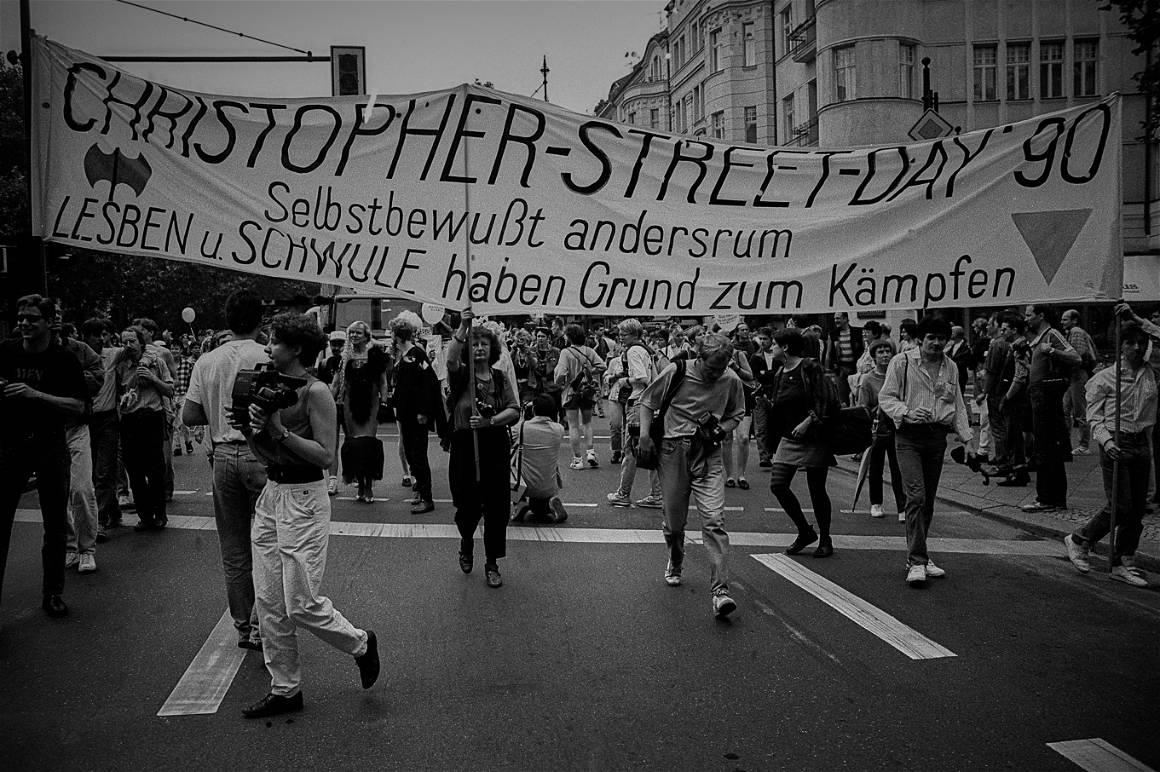
Christopher Street Day in Berlin is world-renowned. Did you know its significance at the time? Was being queer as widely accepted?
We knew how much suffering and bravery is connected to Christopher Street Day and where it comes from. The AIDS Pandemic had also put a harsh strain on the government. Homosexuality was not a big issue at the time, at least in the circles I was in; Kreuzberg 36 and Schöneberg, for example. Berlin was already a very tolerant city.
How do you think the situation in Berlin in 1989 influenced cultural phenomena like Christopher Street Day? How do you see the cultural evolution of the city over the years?
Berlin defined and identified itself with the Wall. As optimistic as Berliners can be, they were then excited to occupy the free spaces. MIGs at Potsdamer Platz and Tacheles (a cultural space), bars, galleries and clubs emerged in every crevice. Now a lot has been developed or has disappeared; abandoned open spaces became rare and artists cannot afford to live in Berlin anymore. Berlin still influences Germany though, and tolerance is highly valued. We’ll see how things continue to unfold.
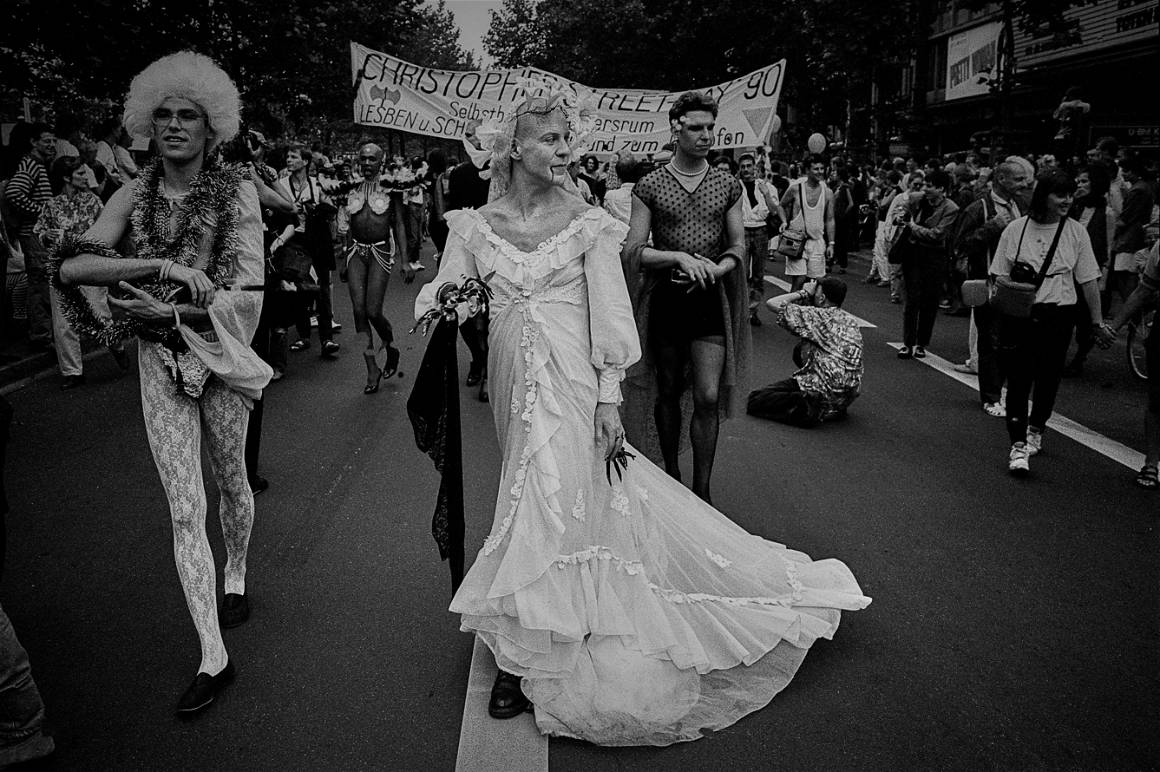
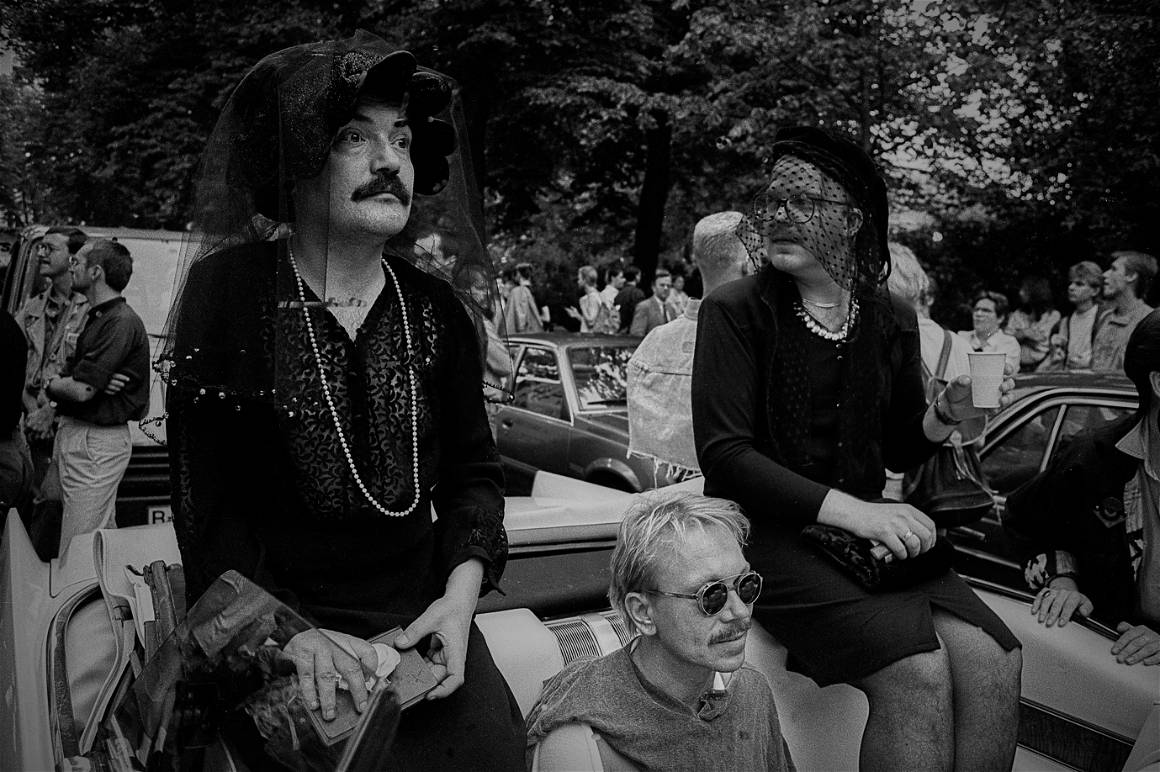
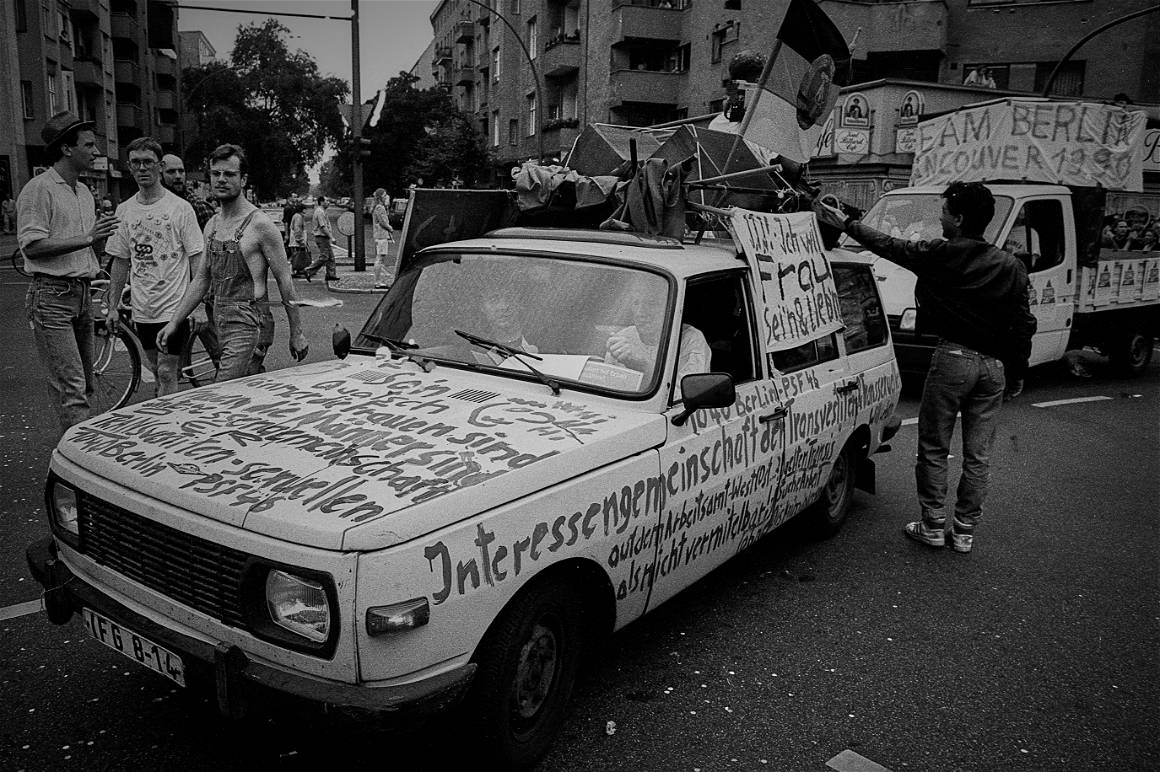
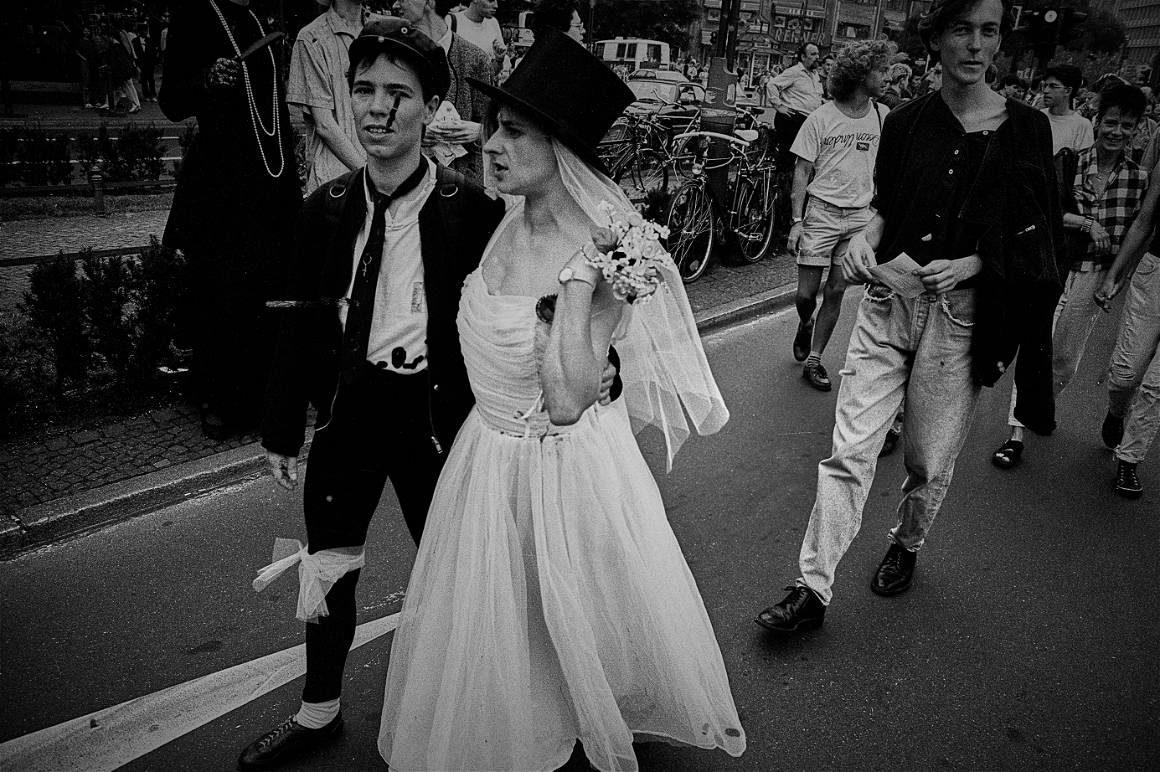
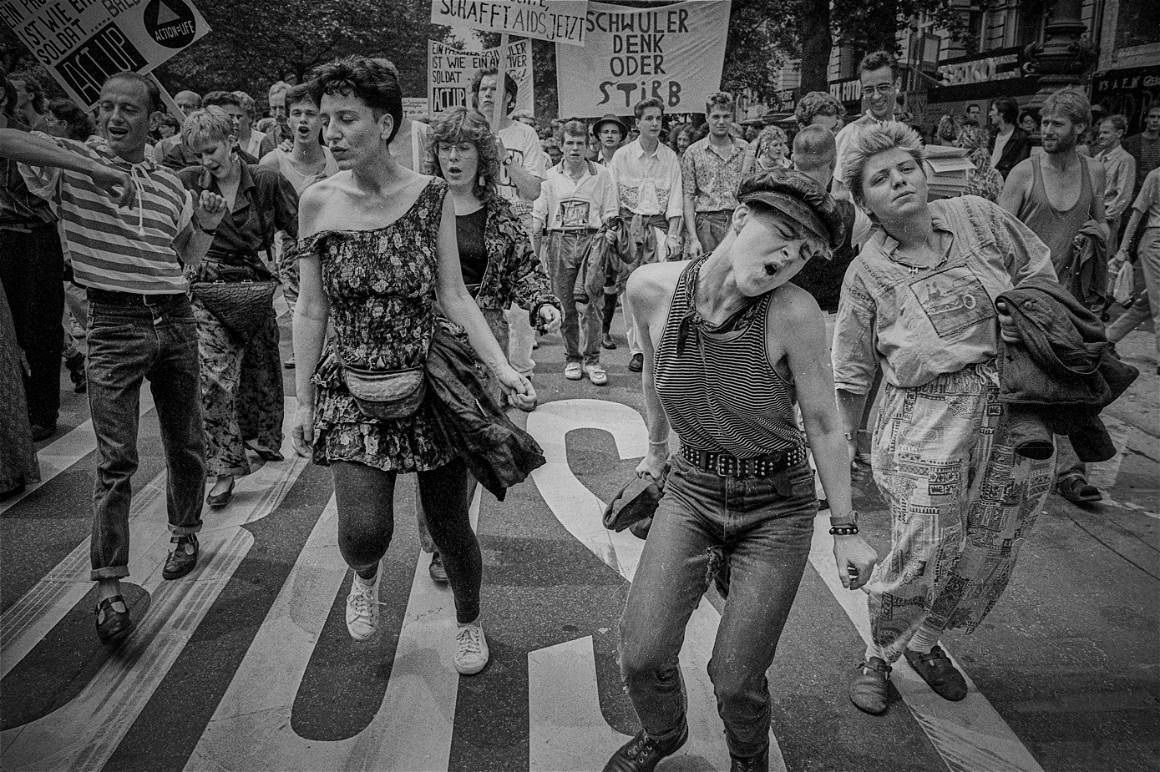
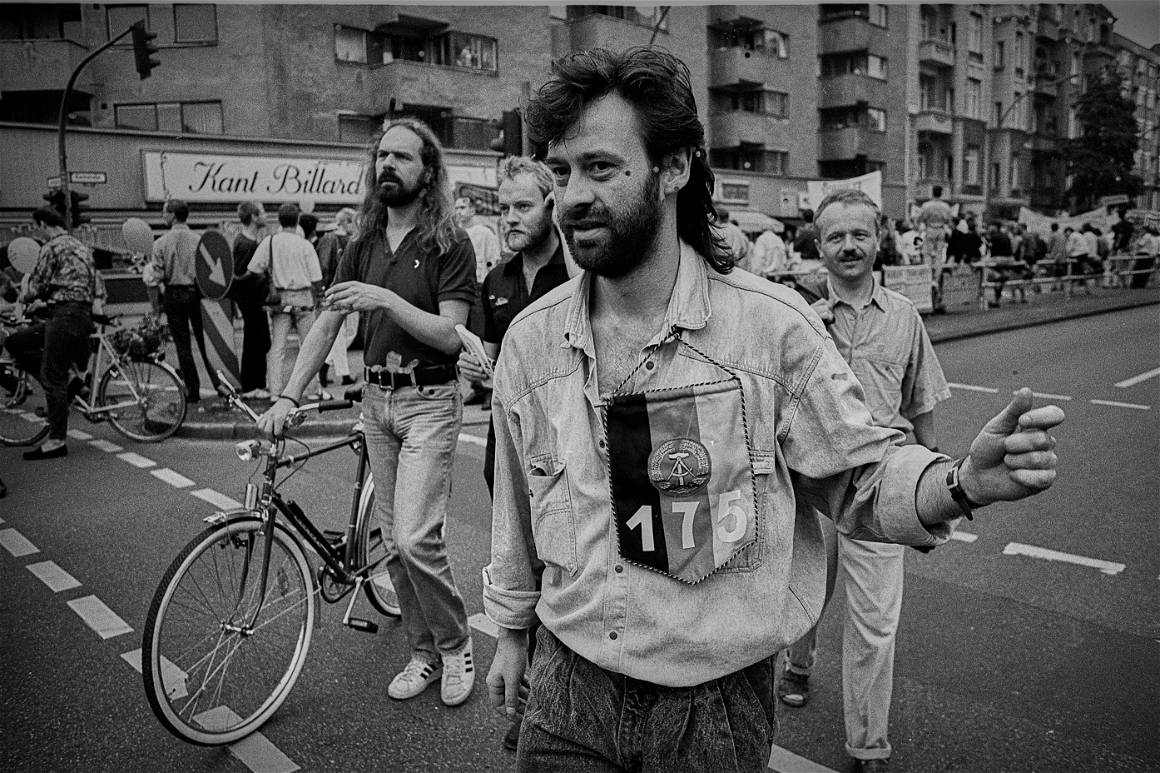
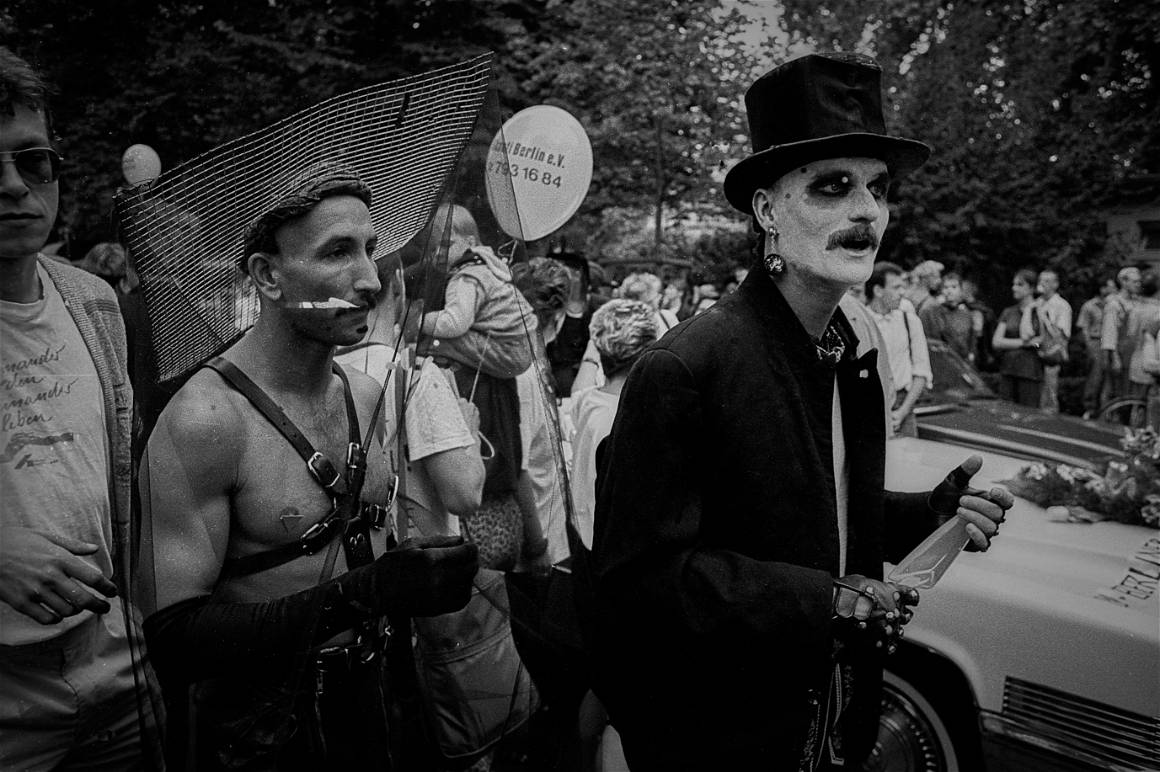
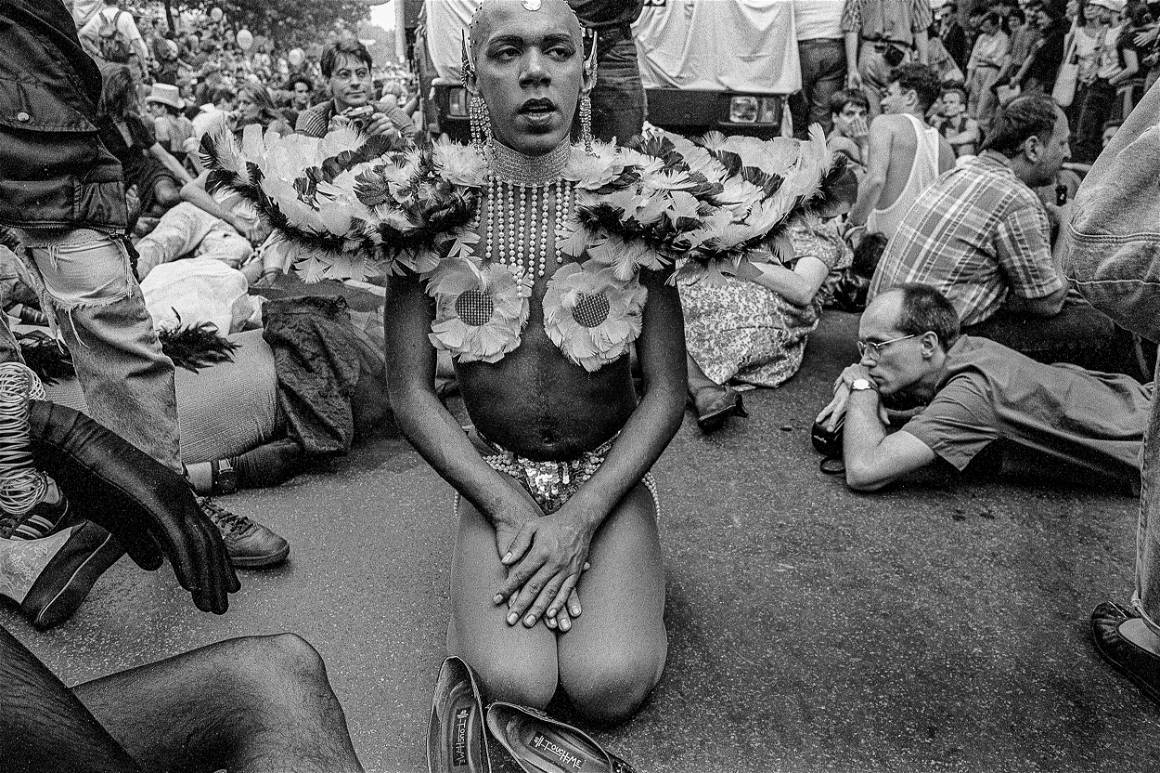
Interview translated from German. All photos by Michael Hughes. Written by columnist and IMAGO Picture Editor Sofia Bergmann, as part of our PRIDE series.


